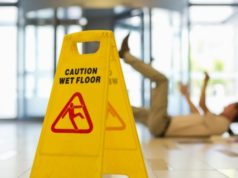Making Repairs and Rebuilding Wisely Following Texas Storm Damage
WASHINGTON, D.C. – August 5, 2015 – (RealEstateRama) — As important as it is to make home repairs as soon as possible following a natural disaster, it also is important to take some time to plan the project, consult with local officials and choose a contractor wisely.
Before You Start:
Contact the local permitting office. Follow all local and state requirements.
Check with your local building official to make sure your work is safe and meets all local and state requirements.
How to Help Reduce Future Damage:
Consider using building materials that are more resistant to flood, wind, corrosion and decay.
If siding or roof sheathing needs replacement, consider installing hurricane/seismic connectors at the rafter-to-wall or truss-to-wall connections. Adding wall-to-foundation ties may also be possible.
Windows, doors and skylights should be checked for leaks. If they need replacement, consider impact-resistant units.
Check your attic for adequate insulation. Straps should be added from rafters to wall top plates, and gable end-wall framing should be braced.
Inspect soffits to determine if structural upgrades are necessary.
If you live in a flood-prone area, elevate and appliances.
How to Select Your Contractor Carefully:
The Texas Attorney General advises watching out for home improvement scammers saying they have left over materials or say they noticed your home was damaged and can repair it. Take your time to choose your contractor.
Look for a contractor with an established physical address.
Get bids from more than one person. Make sure they are in writing and specify exactly what will be done.
Beware of a low-ball price.
Ask for references and contact them.
Make sure the contractor has the proper licenses and insurance coverage required in Texas.
Never pay the full price in advance.
For more information and tips on home repair, FEMA provides information online www.FEMA.gov/Texas-disaster-mitigation. You can also visit the nearest Disaster Recovery Center; find one online at http://asd.fema.gov/inter/locator/home.htm.
For more information on Texas recovery, visit the disaster web page at www.fema.gov/disaster/4223, Twitter at https://www.twitter.com/femaregion6 and the Texas Division of Emergency Management website, https://www.txdps.state.tx.us/dem.
###
All FEMA disaster assistance will be provided without discrimination on the grounds of race, color, sex (including sexual harassment), religion, national origin, age, disability, limited English proficiency, economic status, or retaliation. If you believe your civil rights are being violated, call 800-621-3362 or 800-462-7585(TTY/TDD).
FEMA’s mission is to support our citizens and first responders to ensure that as a nation we work together to build, sustain, and improve our capability to prepare for, protect against, respond to, recover from, and mitigate all hazards.
The SBA is the federal government’s primary source of money for the long-term rebuilding of disaster-damaged private property. SBA helps businesses of all sizes, private non-profit organizations, homeowners and renters fund repairs or rebuilding efforts and cover the cost of replacing lost or disaster-damaged personal property. These disaster loans cover losses not fully compensated by insurance or other recoveries and do not duplicate benefits of other agencies or organizations. For more information, applicants may contact SBA’s Disaster Assistance Customer Service Center by calling 800-659-2955, emailing disastercustomerservice (at) sba (dot) gov, or visiting SBA’s website at www.sba.gov/disaster. Deaf and hard-of-hearing individuals may call 800-877-8339.
FEMA’s temporary housing assistance and grants for childcare, medical, dental expenses and/or funeral expenses do not require individuals to apply for an SBA loan. However, those who receive SBA loan applications must submit them to SBA to be eligible for assistance that covers personal property, transportation, vehicle repair or replacement, and moving and storage expenses.








